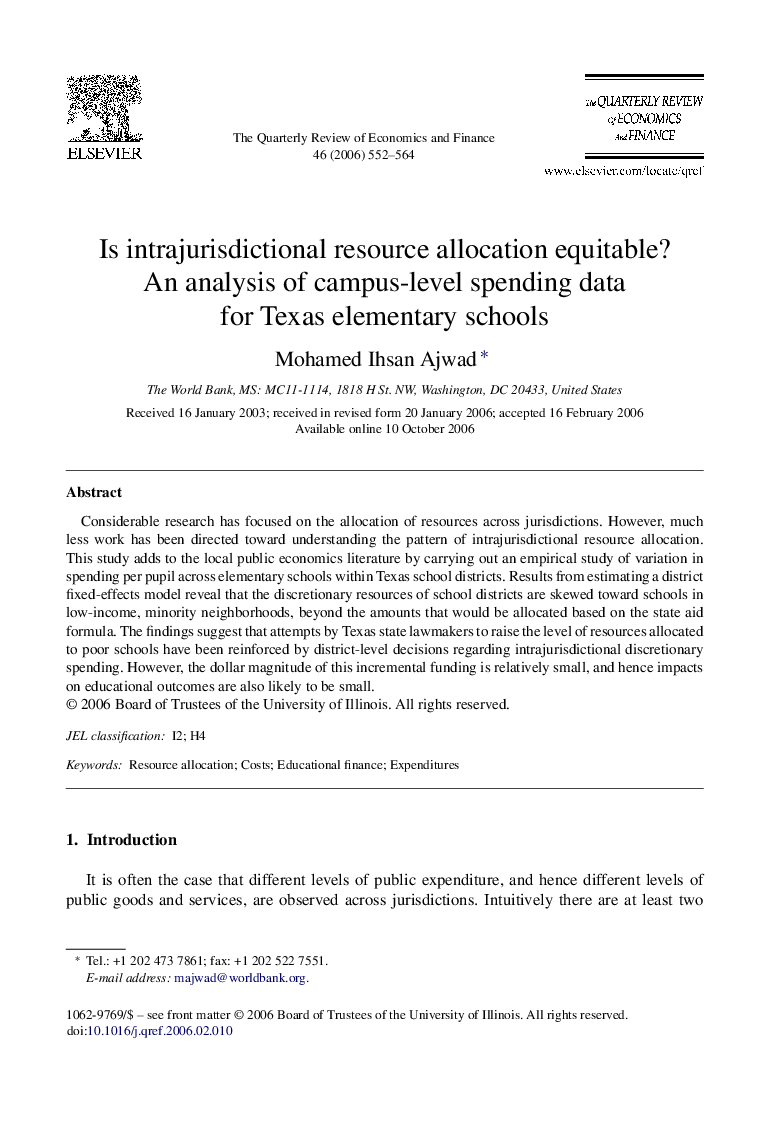| Article ID | Journal | Published Year | Pages | File Type |
|---|---|---|---|---|
| 983594 | The Quarterly Review of Economics and Finance | 2006 | 13 Pages |
Considerable research has focused on the allocation of resources across jurisdictions. However, much less work has been directed toward understanding the pattern of intrajurisdictional resource allocation. This study adds to the local public economics literature by carrying out an empirical study of variation in spending per pupil across elementary schools within Texas school districts. Results from estimating a district fixed-effects model reveal that the discretionary resources of school districts are skewed toward schools in low-income, minority neighborhoods, beyond the amounts that would be allocated based on the state aid formula. The findings suggest that attempts by Texas state lawmakers to raise the level of resources allocated to poor schools have been reinforced by district-level decisions regarding intrajurisdictional discretionary spending. However, the dollar magnitude of this incremental funding is relatively small, and hence impacts on educational outcomes are also likely to be small.
